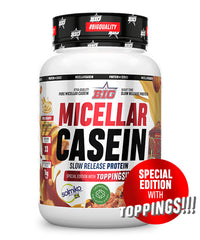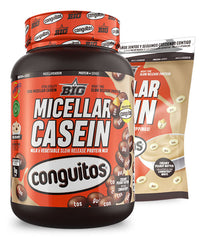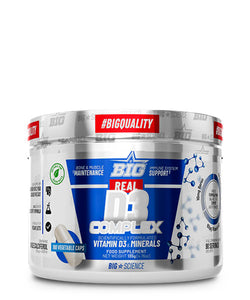
All that glitters is not (B)gold, is it?
Sergio Guerrero
1. VITAMIN D
Vitamin D, although it is considered more of a hormone, is fat-soluble. Its main function is the maintenance of phosphocalcium metabolism due to its actions at the renal and intestinal levels. In addition, it has other autocrine and paracrine functions throughout the body.
The main biochemical forms are vitamin D3 (cholecalciferol) and vitamin D2 (ergocalciferol). In humans, the main contribution comes from skin synthesis, and to a lesser extent from food. Vitamin D3 or D2 is hydroxylated in the liver by a liver enzyme, thus producing 25-hydroxy-cholecalciferol (25OHD), also called calcifediol or calcidiol. Subsequently, the second hydroxylation* occurs mainly and essentially in the kidney - although there are other tissues in which it also occurs, such as the breast, colon, prostate, etc. - where it is converted into the biologically active form, 1 ,25 (OHD), vitamin D, or calcitriol (Figure 1), whose essential functions are to increase the absorption of calcium and phosphorus in the intestine, inhibit the formation of osteoclasts for bone resorption, and reduce the production of parathyroid hormone (PTH). ). But, in addition, vitamin D produced locally in tissues not related to calcium metabolism may have the objective of regulating a wide variety of biological functions, including cell growth, apoptosis, angiogenesis, differentiation and regulation of the immune system, which would be called non-classical actions. of vitamin D. Thus, given that this vitamin participates in an endless number of physiological functions, an association between a vitamin D deficiency and many acute and chronic diseases, including alterations in calcium metabolism, some cancers, type 2 diabetes, diseases cardiovascular and infectious diseases.
When the serum amount of calcifediol, which is measured in laboratory tests due to its longer half-life, is inadequate due to insufficient exposure to UVB radiation, oral intake of vitamin D is necessary to satisfy vitamin D requirements (Figure 2 ).

- Figure 1: Physiological regulation of Vitamin D
Although there is no fully accepted universal consensus on adequate levels of calcifediol, there is growing agreement that concentrations greater than 30 ng/mL (to convert to nmol/L, multiply by 2.5) constitutes an optimal vitamin D status. which ensures bone health, although higher levels of calcifediol are probably required to ensure other health goals.
And vitamin D insufficiency/deficiency constitutes an apparent epidemic worldwide. Thus, it has been described that 88% of the population has plasma calcifediol concentrations below 30ng/mL, 37% have values below 20ng/mL and up to 7% have mean levels below 10ng/mL.
In Spain, this situation is very similar. In individuals over 65 years of age, calcifediol concentrations below 20ng/mL have been described in 80-100% of people, and in the population under 65 years of age the deficit reaches 40% of the Spanish population. This apparent paradox of low concentrations of vitamin D in Spain has been explained by the low dietary intake, protection from sun exposure in the summer months, most of Spain is above parallel 35°N, where the possibility synthesis of vitamin D is scarce in winter and spring, and physical inactivity, since it has been shown that skeletal muscle is a great reservoir of Vitamin D.
In addition to all these factors that reduce the availability of Vitamin D, the following must also be taken into account:
- Inadequate sun exposure : indoor physical activity, sun exposure through glass, institutionalization, exposed body surface, dark clothing, photoprotective creams, pollution...
- Low UV exposure environment : latitude, season of the year, time of day...
- Physiological factors : skin phototype, malabsorption syndromes, obesity, bariatric surgery, liver or kidney disease, exclusive breastfeeding, pregnancy, aging...
- Low intake of vitamin D3 : low use of supplements or unfortified foods, lactose intolerance, socioeconomic status...
- Taking medications : antiepileptics, antiretrovirals, glucocorticoids, laxatives, cholestyramine, antacids...
| VALUES TO CONSIDER |
| Optimal: levels of 75-100 nmol/L (30-40 ng/ml) |
| Insufficient: levels < 50 nmol/L (20 ng/mL) |
| Deficiency: levels of 50-75 nmol/L (20-30 ng/mL) |
| Overdose: levels of 75-375 nmol/L (50-150 ng/mL) |
| Intoxication: levels > 375-500 nmol/L (150-200 ng/mL) |
Useful : To increase between 6-10 ng/mL of calcifediol, 1,000 IU / Day is needed for at least 3 months.
To finish the Vitamin D section, I personally always advise measuring levels through analysis or laboratory testing (HPLC) and adjusting the dose based on individual requirements , although as a general rule it is recommended between 600 IU-4,000 IU daily, showing safe, I prefer to calculate the necessary dose based on the context and reevaluate after 3-4 months .
Doses of up to 10,000 IU have not shown any toxicity .
*Hydroxylation: chemical reaction in which a hydroxyl group (OH) is introduced into a compound replacing a hydrogen atom.

- Figure 2: Main causes of vitamin D deficiency and consequences
- potential in health status. (Zuluaga-Espinosa NA, et al.46).
2. BORON
Boron is a trace element that plays an important role in numerous biological functions, including calcium metabolism, growth and maintenance of bone tissue. Boron appears to influence the metabolism of several nutrients and steroid hormones, such as Vitamin D, testosterone and estradiol.
This role would be particularly evident in case of insufficient dietary intake of vitamin D, magnesium or both .
Boron , whether as Boron, sodium borate or boric acid, thanks to its water solubility, is absorbed in the gastrointestinal tract by 90%, and its elimination route occurs mainly through urine, and in a smaller amount through feces, sweat. and bile (wonderful).
It is distributed throughout all tissues, kidneys, lungs, lymph nodes, liver, muscle, testicles, brain and bones, which is where the highest concentrations are found.
Following the hypotheses that Boron could be an essential nutrient within mineral metabolism and influence bone development, numerous experiments have been developed that relate it to vitamin D3 and minerals such as calcium, potassium and magnesium. Physiological amounts of Boron can modify mineral metabolism in the presence of vitamin D3 and magnesium deficiency, suppressing bone anabolism, increasing the plasma concentration of calcium and magnesium and inhibiting the calcification of growing cartilage. Or, suppressing catabolism and reducing plasma calcium and magnesium, if the dietary intake of magnesium is normal .
Regarding its role on plasma steroid hormones, it is something that dates back to 1987, where experiments carried out by Nielsen on 12 postmenopausal women (altered downward hormonal profile) supplementation with 3 mg of boron per day notably affected concentrations. serum estradiol and testosterone. All of them followed a conventional diet that provided approximately 0.25 mg of boron/day for 119 days.
Another example is the case of subjects who follow estrogen therapy, where an increase in estrogen is sought, and where Boron decreases in the blood, the ingestion of a physiological dose of the same, about 3 mg, increases estradiol levels. All this leads us to the conclusion that Boron increases the absorption of estrogens, or decreases their catabolism.
Regarding testosterone, in a study carried out in 1995 by Naghii and Samman, they saw that supplementation with 10 mg of Boron/Day for 4 weeks in 8 healthy subjects increased plasma testosterone concentrations, although it is true that in no way significant, perhaps because they were healthy subjects, since in Nielsen's studies, in the face of steroid hormone deficiency, a significant increase in both Testosterone and Estradiol was seen in male subjects. (Figure 3 and 4).

- Figure 3: Plasma Testosterone concentration after 4 weeks
- intake of 10 mg/Day of Boron in healthy male subjects.
On the other hand, estradiol concentrations did increase significantly in 7 of them, the eighth subject was discarded due to having slightly high levels at the beginning. Estradiol levels were within normal ranges.

- Figure 4: Plasma concentrations of Estradiol after 4 weeks
- intake of 10 mg/Day of Boron in 7 healthy male subjects
More recently, and with a better methodological quality than in the previous 1995 study, Naghii and colleagues in 2011 also demonstrated that after an acute intake of 10 mg of Boron/Day in 8 healthy male subjects, there was a significant decrease in binding globulin. sex hormones (SHBG) in addition to estradiol. On the other hand, Dihydrotestosterone (DHT), Vitamin D and cortisol were increased (Figure 5). The experts concluded that “Based on the available data, the level of testosterone and estradiol has been modified after long-term therapy, however, the present study showed an increase in the level of free testosterone and a decrease in the level of estradiol. , after short-term consumption. So there seems to be a possible association between endogenous steroids and boron.”
Regarding toxicity , in humans there have been few, and they have mainly been the result of accidental ingestion of insecticides and household products containing borates or use of large amounts of boric acid in the treatment of burns.
According to the EFSA (European Food Safety Authority), the recommended daily intake (ADI) of Boron per day is 0.16 mg/kg.

- Figure 5: Hourly comparison of hormones and inflammatory biomarkers
Notably , all of these increases occurred when magnesium concentrations were low, which brings us to the point that we should always go to the root of the problem . So that you understand it in a simple way, without boron there is no magnesium, and without magnesium there is no Vitamin D. Several cases have been seen where they were supplemented with doses of up to 10,000 IU of Vitamin D and their concentrations did not increase practically at all. Why? Simple, deficiency of boron, magnesium or both. And as we can see in figure 5, everything is connected under a perfect network.

- Figure 6: Mineral and Vitamin Interactions.
REFERENCES
- Rondanelli, M., Faliva, MA, Peroni, G., Infantino, V., Gasparri, C., Iannello, G., Perna, S., Riva, A., Petrangolini, G., & Tartara, A. ( 2020). Pivotal role of boron supplementation on bone health: A narrative review. Journal of trace elements in medicine and biology: organ of the Society for Minerals and Trace Elements, 62, 126577.
- Jones G. Pharmacokinetics of Vitamin D toxicity. Am J Clin Nutr. 2008; 88: S582-8.
- Theodoratou E, Tzoulaki I, Zgaga L, Ioannidis JPA. Vitamin D and multiple health outcomes: umbrella review of systematic reviews and meta-analyses of observational studies and randomized trials. BMJ [Internet]. 2014; 1:348:g2035.
- Holick FM, Binkley NC, Bischoff-Ferrari HA, Gordon CM, Hanley DA, Heaney RP, et al. Treatment and prevention of Vitamin D deficiency: An Endocrine Society Clinical Practice Guideline. J. Clin Endocrinol Metab. 2011; 96: 1911-30.
- José Manuel Cucalón Arenal*, María Guadalupe Blay Cortés, Jesús Zumeta Fustero, Vicente Blay Cortés. SEMG Endocrinology, Metabolism and Nutrition Working Group.2019.
- Naghii MR, Mofid M, Asgari AR, Hedayati M, Daneshpour MS. Comparative effects of daily and weekly boron supplementation on plasma steroid hormones and proinflammatory cytokines. J Trace Elem Med Biol. 2011 Jan;25(1):54-8. doi: 10.1016/j.jtemb.2010.10.001. Epub 2010 Dec 3. PMID: 21129941.
- Naghii MR, Samman S. The effect of boron supplementation on its urinary excretion and selected cardiovascular risk factors in healthy male subjects. Biol Trace Elem Res. 1997 Mar;56(3):273-86. doi:10.1007/BF02785299. PMID: 9197924.
- Nielsen FH. Update on human health effects of boron. J Trace Elem Med Biol. 2014 Oct;28(4):383-7. doi: 10.1016/j.jtemb.2014.06.023. Epub 2014 Jul 5. PMID: 25063690.
- Nielsen, F.H. (1997). Boron in human and animal nutrition. Plant and Soil, 193(1/2), 199–208. http://www.jstor.org/stable/42948096
- Aly, Badiea & Busafi, Majid & Alkitani, Mahfoodha. (2020). The effect of boron supplementation on free testosterone activity in the blood during muscle strength training of volleyball players.
- Varsavsky M, Rozas Moreno P, Becerra Fernández A, Luque Fernández I, Quesada Gómez JM, Ávila Rubio V, García Martín A, Cortés Berdonces M, Naf Cortés S, Romero Muñoz M, Reyes García R, Jódar Gimeno E, Muñoz Torres M ; representing the Osteoporosis and Mineral Metabolism Working Group of the Spanish Society of Endocrinology and Nutrition. Recommended vitamin D levels in the general population. Endocrinol Diabetes Nutr. 2017 Mar;64 Suppl 1:7-14. English Spanish. doi: 10.1016/j.endinu.2016.11.002. Epub 2017 Feb 15. PMID: 28440763.
- Holick MF. The Vitamin D deficiency pandemic: approaches for diagnosis, treatment and prevention. Rev Endrocr Metab Disord. 2017; 18: 153-65.
- Navarro C, Quesada Gómez JM. Vitamin D deficiency in Spain. Fact or myth? Rev Osteoporos Metab Miner. 2014; 6(suppl 1): S5-10.
- Jane Higdon, Ph.D. Linus Pauling Institute. Oregon State University.2004
- EFSA (2013). Scientific Opinion on the re-evaluation of boric acid (E 284) and sodium tetraborate (borax) (E 285) as food additives. EFSA Journal 11 10: 3407. https://www.efsa.europa.eu/de/efsajournal/pub/3407 ; last accessed March 5, 2021.





![CREABIG [Creapure®]](http://bigsupps.site/cdn/shop/products/producto_BIG_creabig_creapure_250g_0noflavour_500x600_8c48a126-a2a2-46a5-9bbd-8763ab82d768_200x.jpg?v=1757315967)





![CFM ISO ZERO [saco]](http://bigsupps.site/cdn/shop/files/producto_cfm_doypack_0noflavour_500x600a_200x.jpg?v=1750981452)
![CLEAR ISO ZERO [750g]](http://bigsupps.site/cdn/shop/files/producto_BIG_clearprotein_icepop_0noflavour_500x600a_200x.jpg?v=1757074297)
![CREABIG FIESTA® KOJAK® flavor - [250g]](http://bigsupps.site/cdn/shop/files/producto_BIG_creabig_kojak_0noflavour_500x600a_200x.jpg?v=1763548822)



